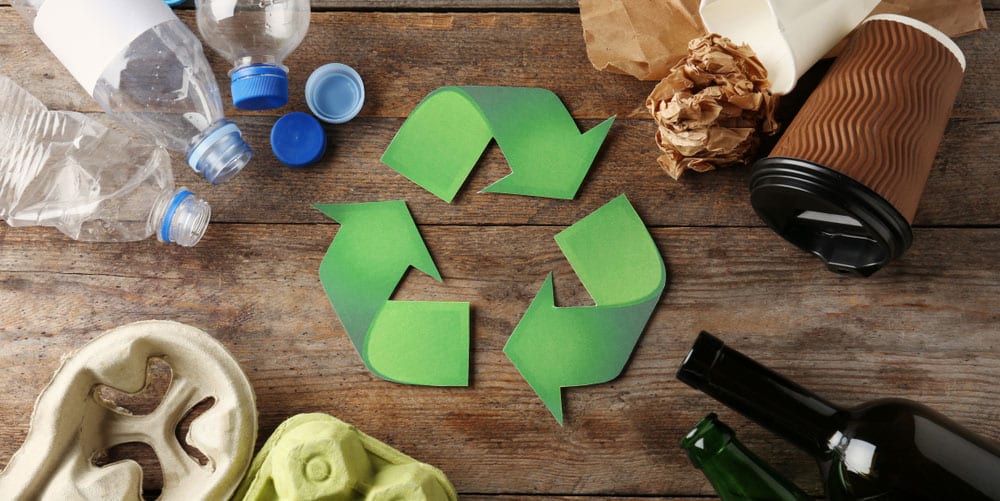Consumers and retailers are increasingly looking for product packaging that has as little impact on the environment as possible. Brands that can find ways to have a positive effect give themselves a powerful point of differentiation too. But how do you set about sourcing and selecting sustainable packaging for food products?
There has been a consistent increase in consumer interest, research and news about sustainable packaging. Single-use plastics, packaging waste, recycling rates, biodegradable packaging and carbon footprint are all familiar, well-understood ideas.
Consumers embracing sustainable packaging
The Chartered Institute of Marketing warned its members in 2019 of the reputational damage of not adopting and promoting sustainable packaging. It cited that 83% of consumers want plastic-free and zero waste stores in their town, and 88% thought their shopping comes with more wrapping than necessary. Even during COVID-19, Trivium Packaging’s survey found that two-thirds of consumers “still believe it is important to buy products in recyclable packaging” with younger consumers willing to pay more for sustainable packaging.
The role of your packaging
Your packaging is the physical embodiment of your brand. It’s the primary touchpoint for your consumers and helps your product stand out and communicate its contents and benefits. However, it must also get your product from farm or factory to fork in its optimum state. It needs to keep it secure, safe and appealing. It can also be critical to preventing food waste. Of course, it also needs to be feasible in terms of manufacturing and viable in commercial terms. Balancing these demands across the development process, through manufacturing and into the supply chain can be complex. However, taking a structured approach can help you find sustainable packaging for food that delivers on all these criteria.
Identify your requirements, understand your options, shortlist suppliers
Establishing or changing your packaging is a real opportunity to boost your sustainability credentials. Whilst there is a vast amount of packaging options available when you identify the type of packaging your product (and brand) needs, you will be able to narrow down your options and start looking at specific suppliers.
Consider your product, its environmental impact and the supply chain
Minimising the impact your product has on the environment involves understanding materials, carbon footprint, manufacture location, and energy and resources used in production. Combining this picture with an understanding of the recycling infrastructure and options in the markets you’re serving will help to guide you to the best overall impact. There is often a trade-off or balance to be made. For example, is it the right option to import a recyclable package from the other side of the globe?
What retailers are looking for
It isn’t just consumers that are increasingly favouring sustainable packing. Retailers also realise that they have a duty and an opportunity to make a positive impact. They, of course, manage vast amounts of products through their supply chain, so the potential impact of change is significant.
Almost all the major UK supermarkets (and 120 organisations in total) have signed up to the UK Plastics Pact. Launched in 2018 and led by WRAP, its approach is to bring organisations together – retailers, businesses involved in the packaging supply chain, NGOs and government – to hit a series of agreed targets by 2025. The targets include redesign, innovation and use of alternatives to eliminate single-use plastics. Supermarkets want to stock more products with sustainable packaging.
Making it straightforward for customers
Packaging and sustainability significantly influence purchase decisions for many consumers. So, making it clear by considering the certification options available and communicating on-pack and in your marketing will help them understand your commitment.
Navigating sustainability is a continuous process
The packaging sector has always been innovative and changing. However, the options available when it comes to sustainable packaging for food are constantly evolving as legislation is introduced and suppliers innovate. There will be a solution that is right for now, but there will be opportunities to further reduce your impact and increase your viability. Having a toolkit and a structured approach will help you keep on top of the options.
Once you understand the packaging opportunities available to you, look at the recycling infrastructure in the regions you sell. Having understood the options, create a hierarchy of sustainability priorities for your brand then evaluate the options against this list. You will quickly be able to shortlist solutions for today, and roadmap solutions for the future that maybe require higher volumes or are not quite ready to launch yet. Dedicating time to rethinking your packaging from a sustainability perspective and having a toolkit and a structured approach will help you keep on top of the options.
Innovate to Zero can help you find the right packaging for your product. Contact me or book a discovery call to learn more about our approach or download this slide deck presented for Bread & Jam.

